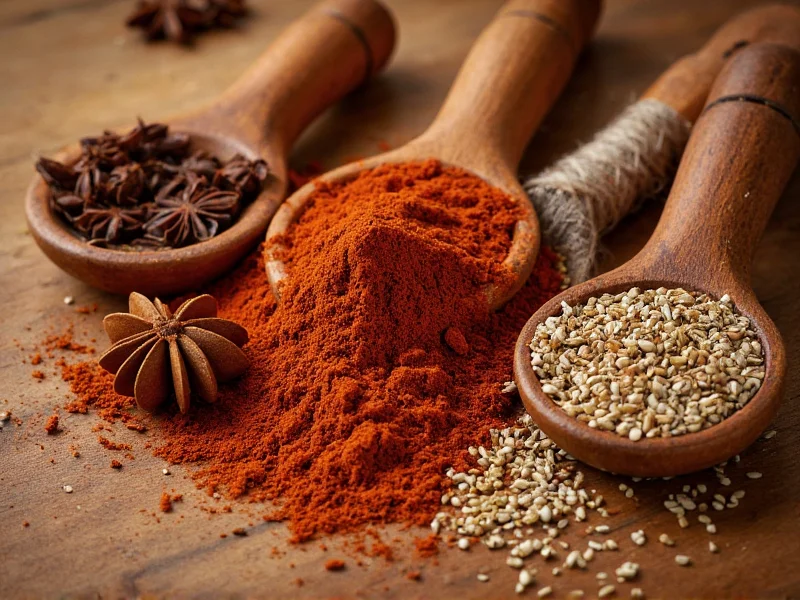These distinctive spices create the signature warmth and comfort associated with holiday cooking. Understanding their individual characteristics and historical significance helps elevate your seasonal culinary creations from ordinary to extraordinary. The traditional Christmas spice combination isn't just about flavor—it represents centuries of cultural exchange, trade history, and evolving culinary traditions that continue to define holiday celebrations worldwide.
The Essential Christmas Spice Blend Components
While regional variations exist, most traditional Christmas spice blends share these foundational ingredients:
| Spice | Flavor Profile | Traditional Christmas Usage |
|---|---|---|
| Cinnamon | Warm, sweet, woody | Essential in gingerbread, mulled wine, and holiday baked goods |
| Nutmeg | Earthy, nutty, slightly sweet | Classic addition to eggnog, custards, and holiday vegetables |
| Ginger | Pungent, spicy, slightly sweet | Key ingredient in gingerbread, spice cookies, and holiday teas |
| Cloves | Intensely aromatic, sweet-spicy | Used in mulled wine, ham glazes, and holiday potpourri |
| Allspice | Complex blend of cinnamon, nutmeg, and cloves | Common in Caribbean-inspired holiday dishes and spice cakes |
Historical Roots of Christmas Spices
The association between specific spices and Christmas celebrations dates back to medieval Europe when these ingredients were considered luxury items. During the holiday season, wealthy households would showcase their status by using expensive imported spices in elaborate feasts and beverages. The tradition of using these spices during winter holidays actually predates Christianity, with many spices incorporated into pre-Christian winter solstice celebrations for their warming properties during cold months.
Spice traders from the Middle East and Asia brought these valuable commodities to European markets, where they became symbols of prosperity and celebration. By the 14th century, recipes featuring these spice combinations appeared in European cookbooks specifically for holiday feasts. The famous "pewter spice" mixture—containing equal parts cinnamon, nutmeg, and ginger—was particularly prized during Christmas celebrations in medieval England.
Regional Variations in Holiday Spice Traditions
While the core Christmas spice blend remains relatively consistent across Western cultures, regional variations add fascinating diversity to holiday cooking:
- German tradition: Lebkuchen spice blend includes additional cardamom and sometimes coriander
- Scandinavian approach: Peppernuts spice mix features more anise and fennel seed alongside traditional Christmas spices
- Caribbean influence: Allspice takes center stage in holiday dishes like Jamaican sorrel drink and Christmas cake
- Mexican variations: Traditional ponche navideño incorporates tejocotes with the standard Christmas spice blend
Practical Applications for Christmas Spices
Understanding how to properly use Christmas spices can transform your holiday cooking. These warming spices work best when incorporated early in the cooking process to allow their flavors to fully develop. For baking applications, always measure spices precisely—too much can overwhelm delicate flavors, while too little won't provide the characteristic holiday warmth.
When making homemade Christmas spice blends, freshly ground spices provide significantly more flavor than pre-ground versions. Whole spices stored properly can maintain their potency for up to two years, while ground spices begin losing their aromatic compounds within six months. For the most vibrant flavors in your holiday baking spices, consider grinding your own from whole spices just before use.
Creating Your Perfect Homemade Christmas Spice Blend
Commercial "pumpkin pie spice" often serves as a ready-made Christmas spice blend, but crafting your own allows for customization to your personal taste preferences. The classic ratio for a versatile Christmas baking spice combination is:
- 4 parts cinnamon
- 2 parts nutmeg
- 2 parts ginger
- 1 part cloves
- 1 part allspice
For a more complex holiday spice mix, consider adding small amounts of cardamom, mace, or even black pepper to enhance certain recipes. When storing your homemade Christmas spice blend, use an airtight container away from light and heat to preserve the volatile oils that give these spices their distinctive aromas.
Beyond Baking: Creative Uses for Christmas Spices
While Christmas spices shine in traditional baking applications, their versatility extends to numerous creative uses:
- Create aromatic holiday potpourri by combining whole spices with dried citrus slices
- Infuse simple syrup with Christmas spices for holiday cocktails and beverages
- Add to savory dishes like roasted root vegetables or holiday ham glazes
- Make spiced hot chocolate with a blend of cinnamon, ginger, and a pinch of cloves
- Create scented sachets for holiday gift wrapping using whole spices in small fabric pouches
Understanding the science behind these warming spices reveals why they're particularly comforting during winter months. The compounds in cinnamon, ginger, and cloves actually stimulate thermoreceptors, creating a physical sensation of warmth that complements their psychological associations with holiday comfort.











 浙公网安备
33010002000092号
浙公网安备
33010002000092号 浙B2-20120091-4
浙B2-20120091-4